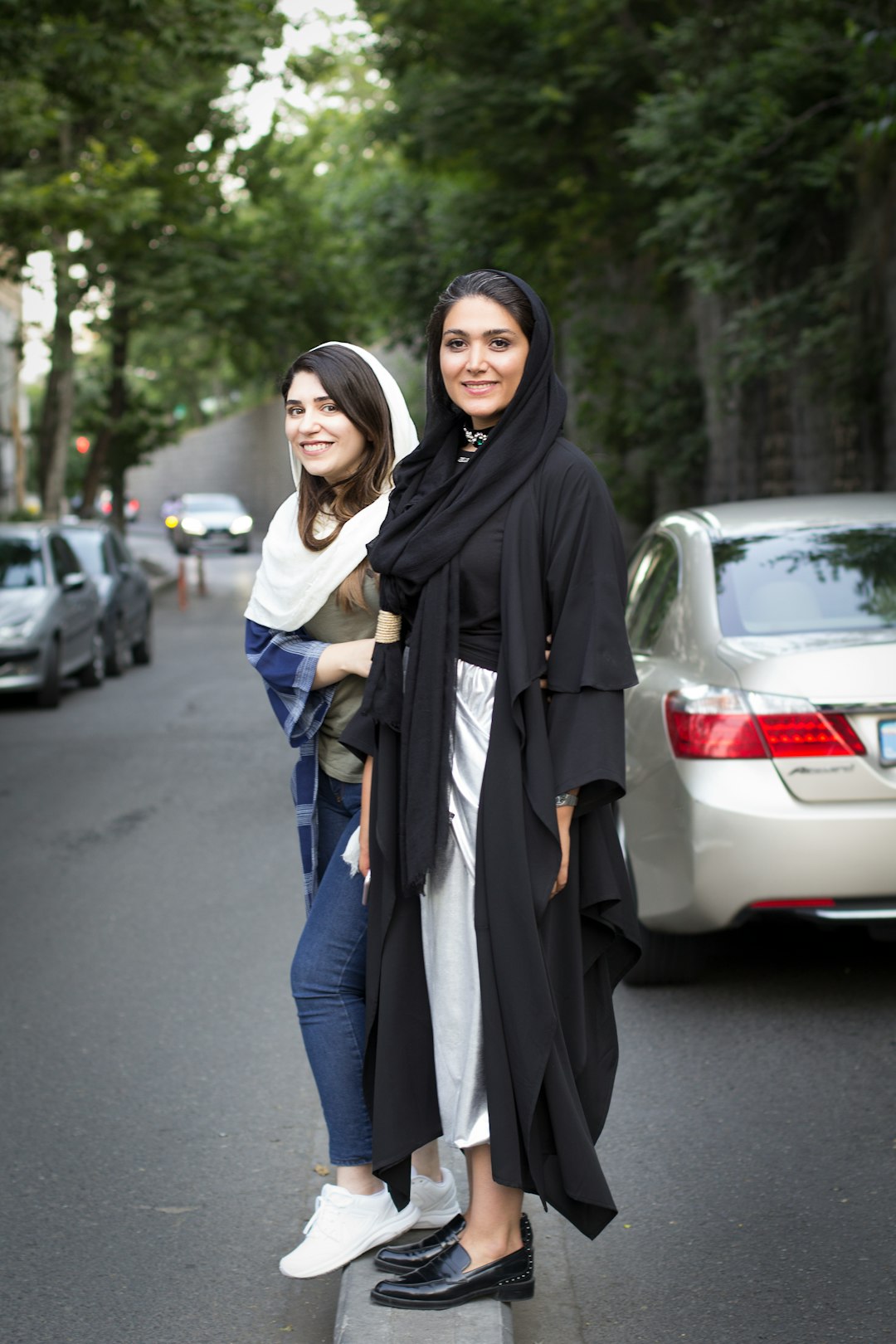Avoid Wearing Shorts in Saudi Arabia

Stepping off a plane into Saudi Arabia’s heat, it might seem natural to reach for shorts, but that’s a big cultural misstep. The Saudi Ministry of Tourism updated its guidelines in 2024, making it clear: both men and women are expected to cover their knees and shoulders in public spaces. Wearing shorts, even in the scorching sun, can lead to warnings or fines. Modesty is not just a preference in Saudi Arabia—it’s a legal expectation, steeped in Islamic principles. Many tourists, often unaware of these rules, have found themselves uncomfortably singled out by local authorities. The government has ramped up efforts to educate visitors, highlighting respectful tourism practices in airports and hotels. Lightweight trousers or long skirts are your best bet for staying cool while respecting local norms. Ignoring these guidelines not only risks confrontation, but can also spoil a trip with unnecessary stress.
No Sleeveless Tops in India’s Religious Sites

India’s religious sites are breathtaking, but they demand a certain level of respect—especially in what you wear. The Archaeological Survey of India, which oversees many temples and heritage monuments, updated its visitor guide in 2023. They ask tourists to wear clothing that covers shoulders and knees, and sleeveless tops are a definite no-go. This dress code is strictly enforced at many temples, mosques, and gurudwaras. Tourists caught unaware might find themselves turned away, embarrassed, or scrambling for a scarf to cover up. States like Rajasthan and Tamil Nadu are especially strict about these customs, and local people may even politely, but firmly, point out inappropriate attire. Carrying a shawl or scarf in your bag is a simple solution that can save you a lot of hassle. Dressing modestly not only shows respect but also opens doors to richer cultural experiences.
Don’t Wear Camouflage Clothing in Caribbean Countries

Camouflage might be a fashion statement elsewhere, but in the Caribbean, it could get you into real trouble. Countries like Jamaica and Barbados have strict laws against civilians wearing camouflage. The Jamaican Constabulary Force issued a public advisory in 2024 reminding tourists that only military personnel are allowed to wear camo. Wearing it can result in arrest or fines, no matter how harmless your intentions. Still, many travelers, unaware of the law, buy camouflage hats or shorts as souvenirs or beachwear. Governments have tried to spread the word through tourism boards and embassies, but the rule continues to catch visitors off guard. If you want to blend in with the island spirit, stick to bright, tropical prints instead. This simple choice can save you from an awkward encounter with the police.
Avoid Wearing High Heels in Venice

Venice is a city made for wandering, but it’s definitely not made for high heels. The city’s ancient cobblestone streets and endless bridges make walking in heels both difficult and dangerous. While there is no official Venice City Council campaign specifically warning tourists against wearing high heels, local travel advisories and experienced guides strongly recommend against them. Injuries from falls are surprisingly common, and there is growing concern about the extra strain on Venice’s historic pavements. Tourists in heels often find themselves struggling to keep their balance, missing out on the joy of exploring freely. Travel safety reports and local guides all agree: comfortable flats or sneakers are the way to go. Not only will your feet thank you, but you’ll be helping preserve one of the world’s most unique cities for future generations. Choosing the right shoes isn’t just about comfort—it’s a way of showing respect for Venice’s fragile beauty.
No Swimwear Outside Beach Areas in Thailand

Thailand’s beaches are stunning, but the rules about where you can wear swimwear are strict. The Tourism Authority of Thailand updated its conduct guidelines in 2024, stating that bikinis and swim trunks are for the beach or pool only. Walking around town or popping into a market in your swimwear is considered disrespectful and can attract unwanted attention. Many tourists, caught up in the vacation mood, forget to change and end up being fined or asked to leave public places. Thai locals value modesty, especially away from the coast, and expect visitors to do the same. If you’re heading to a temple, you’ll need to cover your shoulders and knees—no exceptions. Changing into shorts and a t-shirt before leaving the beach is a small step that goes a long way toward showing respect and fitting in.
Avoid Wearing Religious Symbols in Certain Countries

Wearing religious symbols can be a deeply personal choice, but it’s not always appropriate everywhere. In France, for example, a 2023 law bans conspicuous religious symbols in public schools and government buildings to maintain secularism. In Turkey, tourists wearing large or noticeable religious items may attract extra scrutiny, and it can lead to uncomfortable conversations or even denial of entry at some sites. In some Middle Eastern countries, non-Muslims wearing Islamic symbols can cause confusion or even offense. Local laws and attitudes can vary widely, so it’s important to research before you travel. Many embassies now include advice about religious attire in their travel warnings. Being discreet with symbols is a simple way to avoid misunderstandings and enjoy a smoother journey.
Don’t Wear White in Ghana During Funerals

Funerals in Ghana are deeply significant social events, and the dress code is taken very seriously. While white might seem like a neutral, respectful color in many cultures, in Ghana, it’s traditionally reserved for mourning and is typically worn by close family of the deceased. The Ghana Tourism Authority published a cultural etiquette guide in 2023 advising tourists against wearing white to funerals unless specifically asked. Visitors who ignore this can unintentionally cause distress or confusion, as white carries special meaning during these ceremonies. Instead, dark or muted colors are expected for guests. Taking the time to ask about customs before attending a funeral shows genuine respect and appreciation for Ghanaian traditions. Understanding these details can help you avoid a painful faux pas during a sensitive occasion.
Avoid Wearing Tight or Revealing Clothes in Iran

Iran’s dress code is strict and applies to everyone, including tourists. The Ministry of Culture and Islamic Guidance revised its regulations in 2024, making it clear that tight or revealing clothing is strictly forbidden. For women, this means wearing a hijab and clothing that covers the arms and legs. Men are expected to avoid shorts and sleeveless shirts. Tourists who break these rules risk being fined, detained, or refused entry to attractions. Despite clear warnings, some visitors still choose to wear Western-style revealing clothes, only to find themselves facing uncomfortable confrontations with authorities or locals. Dressing modestly is not just about following the law—it’s about ensuring your own safety and comfort during your stay. Carrying a light scarf or wearing loose, airy pants is a simple way to show respect and avoid trouble.
Summary

These eight clothing mistakes continue to catch travelers off guard, even as governments and tourism authorities update their guidelines and warnings year after year. Understanding local dress codes isn’t just about following rules—it’s about respecting the cultures, traditions, and legal frameworks of the places you visit. When you pack your bags for your next adventure, remembering these tips can help you avoid embarrassment, fines, or worse, and ensure your travels are memorable for all the right reasons.



